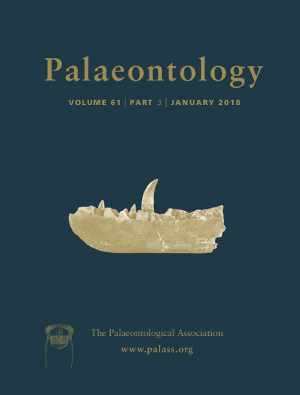Reg. Charity No. 1168330

Stem‐group gnathostomes reveal the sequence of character acquisition in the origin of modern jawed vertebrates. The petalichthyids are placoderm‐grade stem‐group gnathostomes known from both isolated skeletal material and rarer articulated specimens of one genus. They are of particular interest because of anatomical resemblances with osteostracans, the jawless sister group of jawed vertebrates. Because of this, they have become central to debates on the relationships of placoderms and the primitive cranial architecture of gnathostomes. However, among petalichthyids, only the braincase of Macropetalichthys has been studied in detail, and the diversity of neurocranial morphology in this group remains poorly documented. Using X‐ray computed microtomography, we investigated the endocranial morphology of Shearsbyaspis oepiki Young, a three‐dimensionally preserved petalichthyid from the Early Devonian of Taemas‐Wee Jasper, Australia. We generated virtual reconstructions of the external endocranial surfaces, orbital walls and cranial endocavity, including canals for major nerves and blood vessels. The neurocranium of Shearsbyaspis resembles that of Macropetalichthys, particularly in the morphology of the brain cavity, nerves and blood vessels. Many characters, including the morphology of the pituitary vein canal and the course of the trigeminal nerve, recall the morphology of osteostracans. Additionally, the presence of a parasphenoid in Shearsbyaspis (previously not known with confidence outside of arthrodires and osteichthyans) raises some questions about current proposals of placoderm paraphyly. Our detailed description of this specimen adds to the known morphological diversity of petalichthyids, and invites critical reappraisal of the phylogenetic relationships of placoderms.